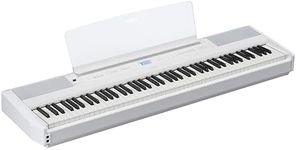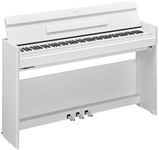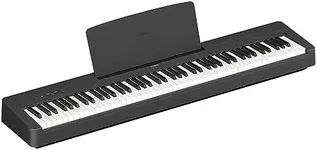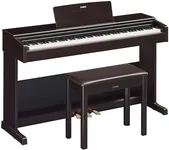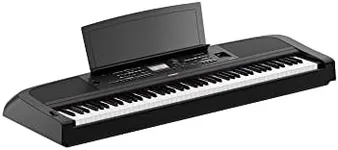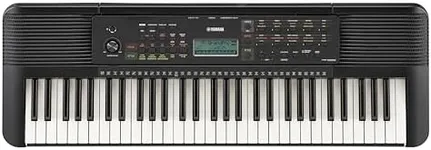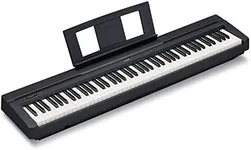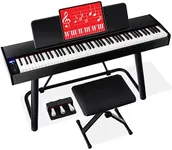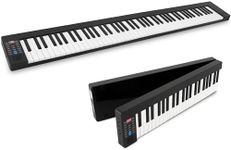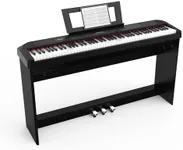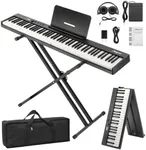Buying Guide for the Best Yamaha Keyboards For Beginners
Choosing the right Yamaha keyboard for beginners can be a fun and rewarding experience. Yamaha is known for producing high-quality keyboards that cater to various skill levels, including those just starting out. When selecting a keyboard, it's important to consider several key specifications that will impact your learning experience and enjoyment. Understanding these specs will help you make an informed decision and find the best fit for your needs.Number of KeysThe number of keys on a keyboard is crucial because it determines the range of notes you can play. Keyboards typically come with 61, 76, or 88 keys. For beginners, a 61-key keyboard is often sufficient as it covers most of the notes needed for learning and playing a wide variety of songs. If you plan to advance to more complex pieces or classical music, you might consider a 76 or 88-key keyboard, which offers a broader range and more versatility.
Touch SensitivityTouch sensitivity refers to how the keyboard responds to the pressure you apply to the keys. A touch-sensitive keyboard will produce different volumes depending on how hard or soft you press the keys, mimicking the feel of an acoustic piano. This feature is important for developing proper finger strength and dynamics in your playing. Beginners should look for a keyboard with adjustable touch sensitivity settings, allowing them to start with a lighter touch and gradually increase the sensitivity as they improve.
Built-in Learning FeaturesMany Yamaha keyboards come with built-in learning features such as guided lessons, light-up keys, and practice modes. These features can be incredibly helpful for beginners as they provide step-by-step instructions and interactive ways to learn new songs and techniques. When choosing a keyboard, consider what kind of learning aids are included and how they align with your preferred learning style. These features can make the learning process more engaging and effective.
PolyphonyPolyphony refers to the number of individual notes a keyboard can produce at the same time. For beginners, a polyphony of 32 to 64 notes is usually sufficient. This allows you to play chords and use the sustain pedal without notes cutting off unexpectedly. As you progress and start playing more complex pieces, you might want to look for a keyboard with higher polyphony, such as 128 or 192 notes, to ensure smooth and uninterrupted sound.
PortabilityPortability is an important factor, especially if you plan to move your keyboard around frequently or have limited space. Lightweight and compact keyboards are easier to transport and store. Look for a keyboard that is easy to set up and take down, and consider whether it comes with a stand or carrying case. Portability can make practicing more convenient and flexible, allowing you to play in different environments.
Sound QualitySound quality is a key aspect of any keyboard. Yamaha keyboards are known for their high-quality sound samples, which can make your playing experience more enjoyable and realistic. Pay attention to the types of sounds and voices available on the keyboard, such as piano, strings, and percussion. For beginners, having a variety of sounds can make practice more fun and help you explore different musical styles. Try to listen to demos or test the keyboard in person to ensure the sound quality meets your expectations.
Connectivity OptionsConnectivity options, such as USB, MIDI, and headphone jacks, can enhance your learning and playing experience. USB and MIDI connections allow you to connect your keyboard to a computer or other devices for recording, composing, and using music software. Headphone jacks are essential for practicing quietly without disturbing others. Consider what connectivity options are important for your needs and how they can support your musical goals.
